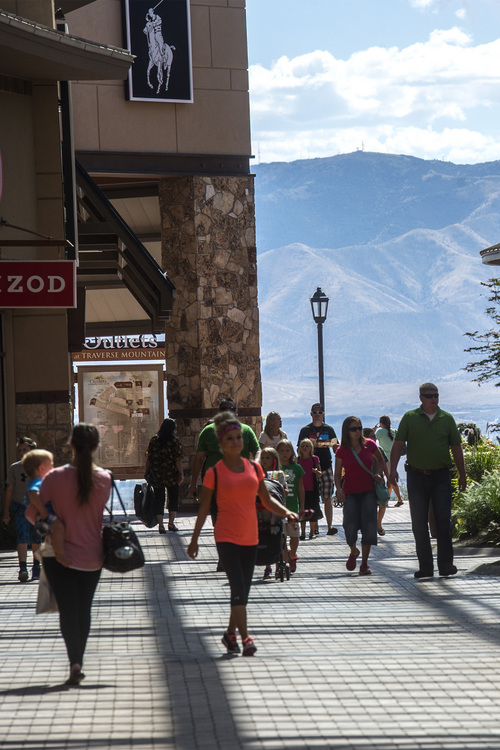This is an archived article that was published on sltrib.com in 2014, and information in the article may be outdated. It is provided only for personal research purposes and may not be reprinted.
Feel richer? Utah enjoyed the third-highest increase in median-household income among the states between 2012 and 2013, according to census estimates released Thursday.
It rose 3.3 percent — behind only Wyoming's 5.7 percent and Alaska's 5.3 percent. Nationally, the increase was a mere 0.6 percent.
Utah's median-household income rose from $57,841 to $59,770 and is now ninth highest overall in the country. Economists say that is not only because of a relatively stronger economy here, but also perhaps because Utahns tend to have larger households — and may have more people working in each home, including teens.
That increase was a bright spot for Utah in the annual, massive release of data from the Census Bureau's American Community Survey — which gives an annual statistical snapshot of the nation.
Data also show again that Utah leads the nation, thanks to Mormon influence, in areas related to traditional families, including the largest family size, youngest average age (because of a high number of children), highest fertility, most families headed by married couples and youngest age at first marriage.
But the biggest headline was about the increase in household income.
"It does not surprise me to see Utah's household income among the fastest growing because we have a labor market that is recovering from the recession more robustly than other states," said Pam Perlich, senior research economist at the University of Utah.
"Certainly, we don't have dramatic economic growth, but we do have some pretty sustainable, consistent, positive job growth."
Natalie Gochnour, chief economist for the Salt Lake Chamber, added, "2013 was a comeback year for housing," which had lost 40,000 Utah construction jobs when the recession hit.
Gochnour said housing started strong in 2014, but has slowed considerably the last four months.
Phil Dean, manager of budget and policy at the Governor's Office of Management and Budget, said he's not surprised at the growth because Utah has had the nation's second-lowest unemployment rate and third-strongest rate of job growth.
Household income could also be high, in part, because data show Utah has the nation's largest average household size, 3.17 compared with a national average of 2.65. More working people living together can raise income, such as when married children move home.
Perlich said that is likely a minor part of what is happening "because the economy is improving and people are able to form independent households."
The new data also show that Utah has the nation's third-best income equality — meaning it is relatively evenly spread, rather than the rich receiving most of it — also just behind Wyoming and Alaska.
"Utah historically has had not a lot of rich people and not a lot of poor people, but a lot of middle income people. But over the last 20 years we have begun to see increases in inequality in Utah," Perlich said.
Meanwhile, new data again show Utah leads the nation in categories related to traditional families, but slowly is becoming more like the rest of the nation.
"That's definitely the result of us being at the epicenter of the Mormon-culture region," Perlich said.
Some of those categories include: youngest median age (30.2, compared to 37.5 nationally); largest median family size (3.66, compared to 3.26 nationally); and highest percentage of households headed by married couples (61.4 percent, compared to 48 percent nationally).
Others include the highest number of married-couple headed households with children under 18 (31.5 percent compared to 19.1 percent nationally); highest number of women ages 15-50 who gave brith in the past year (72 per 1,000, compared to 52 per 1,000 nationally); and youngest age at first marriage (25.9 for males and 24.0 for females, while nationally it is 29.4 for males and 27.4 for women).
Perlich said those numbers are slowly moving toward national averages as more non-LDS people move to Utah, and as Mormons themselves start to mirror national trends more.
The new data also show that minorities now make up 20.5 percent of Utah's population, up from 19.7 percent in 2010.
"Utah has become much more multicultural, multiracial, multiethnic, multilinguistic, multireligious," Perlich said. "But it's important to recognize that the great recession really has brought a pause to immigration both international and domestic. So most of the growth of our multiethnic populations is through births."











